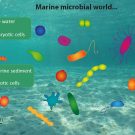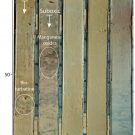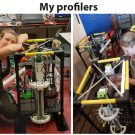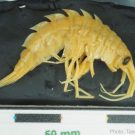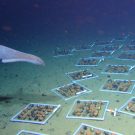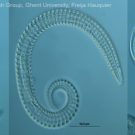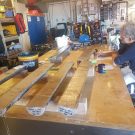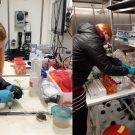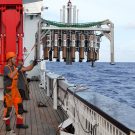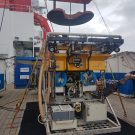The smallest life at the seafloor (Deutsch s.u.) by Batuhan Yapan, MPI and Dr. Julia Otte AWI/MPI The deep sea seems very far away from the perspective of our daily life on land. For comparison, the deep seafloor in the northern Pacific is as far away as the clouds in the sky – about 4000 […]
Hard Rock and Heavy Metal: join the microbial deep-sea party! / Hard Rock und Heavy Metal: eine mikrobielle Tiefseeparty!
by Dr. Julia Otte, AWI and Jessica Volz, AWI (deutsch s. u.) What gravity cores can tell us about the biogeochemistry of the Deep The deep sea has fascinated mankind since the early odysseys across the oceans – many myths have been told about the depths of the sea with the dreaded Kraken and Moby […]
Supervising sensitive deep-sea sensors / Überwachung sensibler Tiefsee-Sensoren
by Elena Schiller, AWI (deutsch s. u.) Essentials of deep-sea research technology: The first thing I learnt upon entering a deep sea technology workshop was “non-corrosive steel is non-corroded on the day of delivery”, which leads me to my first topic: materials. We tend to avoid most metals because seawater is highly corrosive. So we […]
Catch It If You Can! – Amphipods in the Deep-Sea
by Tasnim Patel, RBINS Life in the deep-sea is no picnic and dedicating your life to studying our last truly unexplored wilderness isn’t easy either. To sample fauna in the abyssal plains requires courage, expertise, commitment, financial backing and in my case …a pinch of luck. I’m studying deep-sea scavenging crustaceans, which are not only […]
Real or fake? Exploring animal communities associated with natural and artificial polymetallic nodules
by Sabine Gollner and Coral Diaz Recio Lorenzo (Royal Netherlands Institute for Sea Research NIOZ) The growth of the global economy and technological development is increasingly leading to scarcity of certain metals essential for the high-tech industry. Many countries including a number from the EU are currently exploring the potential of deep-sea mineral resource exploitation […]
Deep-sea gardening
by Dr. Freija Hauquier, Ghent University Underneath the seafloor lies an entire world of small animals crawling between the sediment grains, well hidden from the human eye at first glimpse. Yet they are numerous, diverse, and equally deserve our attention in the context of deep-sea mining. Sure, studying them requires a bit more patience than […]
The taste of sediment
by Henko de Stigter (Royal Netherlands Institute for Sea Research, NIOZ) Until somebody came up with the idea of mining polymetallic nodules from the abyssal depths of the Pacific Ocean, this place was one of the remotest and quietest on our planet. Far away from the brute natural forces of storms, floods, landslides, tsunamis and […]
Take the chance / Ergreif die Chance
Impression of our youngest scientist (deusch s.u.) Hi, my name is Ann-Kathrin Weßels and I study Biology. I am currently working at the DZMB in Wilhelmshaven at my Bachelor Thesis. I took the chance and left daily life behind for two months for my biggest adventure so far. Thursdays 21st of march: After a brief […]
A small world between grains / Eine kleine Welt zwischen den Sandkörnern
by Dr. Sven Rossel, Katja Uhlenkott und Ann-Kathrin Weßel (deutsch s.u.) “Ah, you’re playing with mud again.” That is something biologists and geologists hear quite often on board. And yes, we are one of the parties “playing with mud”. But actually we, the biologists from Senckenberg, German Centre for Marine Biodiversity Research, are not interested […]
The ROV on board SONNE 268
The largest and probably most expensive scientific equipment on board of RV SONNE on the present leg is a remotely operated deep-diving “robot” called ROV KIEL 6000. “ROV” is the abbreviation for “Remotely Operated Vehicle”. The ROV provides “eyes and arms in the deep sea”. ROV KIEL 6000, which got its name from the city […]
